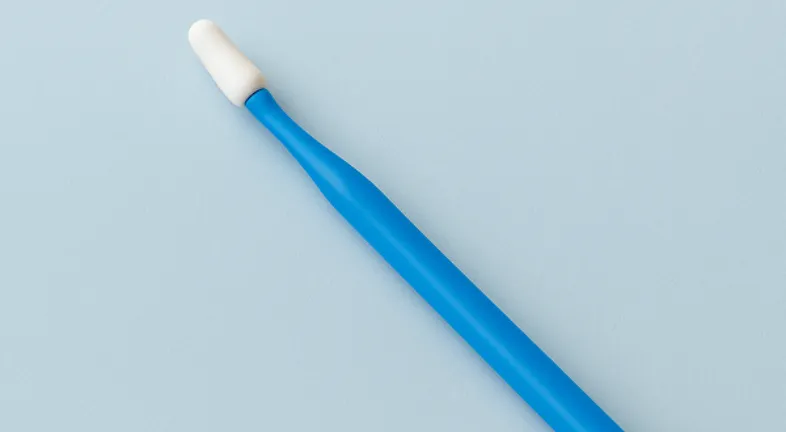
Ever wonder how some people have that perfectly even, white smile, like it just belongs in a toothpaste ad? Most of the time, it’s not just good genetics or lucky whitening strips. It’s veneers.
Dental veneers have become one of the most popular cosmetic treatments in dentistry, and honestly, it’s not hard to see why. They’re basically thin shells that sit on top of your teeth to fix things like chips, stains, gaps, or slightly uneven edges. You get that instant, clean, natural look, without spending years in braces or going through multiple whitening sessions.
They’ve become the go-to option for people who want to refresh their smile quickly and permanently. But here’s the thing, veneers aren’t just a one-size-fits-all deal. There are different types, materials, and costs involved, and what works for one person might not be right for someone else.
So in this blog, we’ll go through everything, from what veneers actually are, how the process works, the cost (especially in the UK), and what kind of results you can really expect.
Dental veneers, or teeth veneers, are super-thin covers made to sit on the front surface of your teeth. Think of them like really small shells that are custom-made to fit perfectly. The main goal? To make your teeth look better. That can mean fixing stains, chips, uneven shapes, or small gaps.
They’re usually made from either porcelain or composite resin. Porcelain veneers are the fancy kind, strong, long-lasting, and they reflect light in a way that looks very natural. Composite veneers are a bit more affordable and can often be done faster, sometimes even in one visit, but they don’t last quite as long.
There isn’t just one kind of veneer that fits everyone. The type your dentist recommends usually depends on your budget, your teeth, and what kind of result you’re after. Here’s how it usually breaks down.
These are the most common, and honestly, the most durable ones too. Porcelain looks really natural because it reflects light the same way real enamel does. It’s stain-resistant, smooth, and lasts for years if you take care of it. The only catch is that they take a few dental visits since they’re custom-made in a lab.
These are made from a tooth-colored resin, the same material used for fillings. They’re faster to apply, often in a single appointment, and they cost less. The downside? They can stain over time and might chip more easily than porcelain. But they’re easy to repair, so if you’re on a budget or testing the waters, this is a good option.
You might’ve heard of these in ads. Lumineers are an ultra-thin version of veneers. The big thing here is that they don’t require much, if any, enamel removal. They just go over your teeth as they are. Less invasive, but not suitable for everyone. If your teeth are really dark or uneven, they might not give you the best coverage.
These are usually worn while you wait for your permanent ones. They’re not meant to last long but help you get used to how your new smile will feel and look.
So yeah, you’ve got options. It’s really about what works best for your teeth and what you want out of them: quick results, long-lasting shine, or something in between.
Getting veneers isn’t a one-step thing. It’s a bit of a process, but honestly, it’s pretty straightforward once you know what to expect.
It starts with a chat. You and your dentist talk about what you want to change, maybe it’s color, shape, or just a more even smile. They’ll check your teeth, take some X-rays, and sometimes do a quick mock-up so you can see what veneers might look like.
This is where a little enamel (the top layer of your teeth) is trimmed off. Not much, just enough to make room for the veneer so it sits naturally. Don’t worry, it’s painless since it’s a very thin layer, and most people don’t even need anesthesia for this.
Once your teeth are prepped, the dentist takes impressions, basically a mold or 3D scan of your teeth. That’s sent to a lab where your custom veneers are made. In the meantime, you might get temporary veneers to protect your teeth and help you adjust to the look.
When the veneers are ready, your dentist checks the fit and color. They might make tiny adjustments before permanently bonding them with a special adhesive. Then, they use a curing light to harden the bond and make sure everything’s sealed tight.
Once they’re in place, the dentist polishes and checks your bite. You’ll probably have a follow-up appointment after a week or two just to make sure everything feels right.
The whole process usually takes two visits, maybe three if you’re getting a full smile makeover.
The big reason people go for veneers is because they change your smile almost instantly. But it’s not just about looks, there’s more going on here.
So in short, veneers don’t just make your teeth look better. They help them stay stronger and give you a smile you don’t have to hide.
Okay, so while veneers sound like the dream fix, they’re not perfect for everyone. There are a few things to think about before jumping in.
First, the process is permanent. Once your enamel is trimmed down, that layer doesn’t grow back. So if you ever remove the veneers, you’ll need to replace them with new ones. It’s a long-term commitment.
Then there’s sensitivity. Some people notice their teeth feel a bit more sensitive to hot or cold after getting veneers. It usually settles after a few days or weeks, but it’s something to be aware of.
Cost can be another factor. Veneers are an investment. Porcelain ones especially. They’re worth it if you want something durable and natural-looking, but it’s not a small expense.
There’s also maintenance. Even though veneers don’t stain much, you still need to take care of them. Grinding your teeth, biting on pens, or using them to open packets (you’d be surprised how many people do this) can chip or damage them.
And while rare, veneer detachment can happen. That’s when the bond weakens over time. Usually, it’s easy to fix, but it does mean another trip to the dentist.
So yeah, veneers are amazing for transforming your smile, but they’re not a “get it and forget it” deal. You’ll need to take care of them like you would your natural teeth, maybe even a little more carefully.
Figuring out what veneers cost feels confusing. Prices swing a lot depending on the material, clinic, number of teeth, and city. Here’s what we found, so you know what to expect and don’t get shocked.
Getting veneers is one thing, but keeping them looking good is where the real work starts. Luckily, it’s not complicated, just a few habits and you’re good.
You don’t need anything fancy. Just brush twice a day with a soft toothbrush and fluoride toothpaste. Go easy on the pressure. Veneers don’t get cavities, but your natural teeth and gums still can. Floss every day, and if you tend to forget, try using a water flosser. It’s faster and keeps the edges clean.
Try not to bite into super hard foods, like ice cubes, nuts, or hard candies. And definitely don’t use your teeth to open packets or bottles (yes, people do that).
If you have composite veneers, keep an eye on things like coffee, tea, or red wine. They can stain over time. Porcelain ones are more resistant, but still, moderation helps.
Don’t skip your dentist visits. Every six months is the standard. They’ll check for chips, cracks, and make sure your bite still feels natural. If your veneers ever feel rough or catch your tongue, it’s usually a quick polish or minor fix.
Veneers can last a decade or more, but over time, wear happens. You might see slight discoloration around the edges, or a veneer might loosen. When that happens, don’t panic. Your dentist can usually repair or replace just the one that’s worn out.
Veneers are great, but they’re not the only way to fix your smile. Depending on what’s going on with your teeth, maybe it’s chips, stains, or just misalignment, there are other options that can look just as good (and sometimes cost less).
If you’ve got small chips, cracks, or gaps, bonding can be a quick fix. The dentist uses a tooth-colored resin to reshape or cover imperfections. It’s painless, usually done in one visit, and way cheaper than veneers.
The only catch is durability; bonding doesn’t last as long and can stain more easily. So, it’s ideal if you want something fast and affordable, but not necessarily a long-term solution.
If your main concern is color, not shape, whitening might be all you need. Professional whitening treatments can lift years of staining and give your teeth that clean, bright look, no drilling or reshaping required.
It’s also the cheapest option on this list. But if you’ve got enamel wear or deep discoloration that whitening can’t fix, that’s where veneers come in.
There are many teeth straightening options that can help, but for teeth that are crooked or crowded, clear aligners like Caspersmile can do the job without covering your natural teeth. They gradually move teeth into place, giving you a straighter smile without the prep or cost of veneers.
It’s a slower process, but you keep your natural enamel intact, which is a big plus if your teeth are healthy and you just want them aligned better.
Basically, it comes down to what you want to change and how long you want it to last. Veneers are more of a full makeover. Bonding and whitening are quick touch-ups. Aligners are the slow but natural route to a better smile.
Getting veneers isn’t just about changing how your teeth look; it’s about how you feel when you smile. They can completely transform your confidence, especially if you’ve spent years hiding chips, stains, or uneven edges.
That said, veneers are a commitment. They look incredible, but they also come with maintenance, cost, and the reality that you’ll probably need replacements down the line.
If you’re on the fence, start by talking to your dentist or exploring less permanent options first, like whitening, bonding, or even clear aligners if your main issue is alignment. Once you know what you want your smile to look like, deciding on veneers becomes a lot easier.












Curated the best for your knowledge
.webp) Dental Bonding Cost: Prices, Process & What to Know
Dental Bonding Cost: Prices, Process & What to KnowIf you’re thinking about fixing a chipped tooth, closing a gap, or smoothing out uneven edges, dental bonding is often the easiest (and quickest) way to do it. And honestly? It’s one of the most budget-friendly cosmetic treatments out there, if you know what to expect. But here’s the part everyone worries about first: “How much does tooth bonding cost?” The short answer: it depends. The long answer: let’s break it all down so you actually understand where the price comes from, what you’re paying for, and whether bonding is the right fix for your smile.
Read More.webp) Mouthwash for Gums: What to Choose & Why
Mouthwash for Gums: What to Choose & WhyYou know the feeling when your gums suddenly have a meltdown? A little swelling, a little bleeding, and you are down the rabbit hole on Google at 3 a.m., trying to find the best mouthwash for gums. It happens. Gums can be finicky little guys. They deserve some love, some care, and sometimes a splash of minty freshness. But not all mouthwashes are created equally. Some are just flavored water, acting like they are helping. Some are awesome "fight germs" formulations that your dentist wishes everyone used. In this article we are going to break down what’s is the best mouthwash for your gums.
Read More What Are Gum Simulators and How Do They Improve Oral Health?
What Are Gum Simulators and How Do They Improve Oral Health?When trying to maintain a perfectly healthy smile, most people tend to focus on proper brushing and regular flossing, but there's another underrated tool that can be extremely helpful in keeping your mouth healthy. The gum stimulator. Though it may sound like a complicated dental instrument, a gum stimulator is actually a fairly simple yet effective tool. It's designed to strengthen and massage your gums while removing plaque from areas that are tough to clean. It does all of this while boosting blood circulation in your gums.
Read MoreQuick Links

Heading